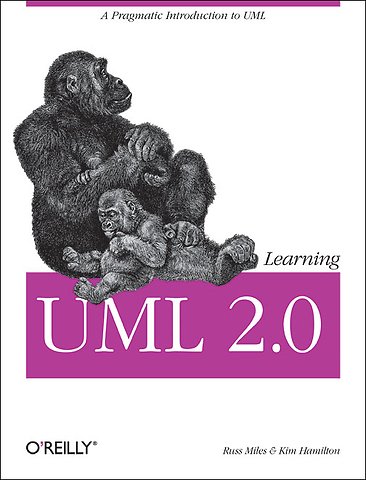Learning UML 2.0
A pragmatic introduction to UML
Samenvatting
If you're like most software developers, you're building systems that are increasingly complex. Whether you're creating a desktop application or an enterprise system, complexity is the big hairy monster you must manage.
The Unified Modeling Language (UML) helps you manage this complexity. Whether you're looking to use UML as a blueprint language, a sketch tool, or as a programming language, this book will give you the need-to-know information on how to apply UML to your project. While there are plenty of books available that describe UML, Learning UML 2.0 will show you how to use it.
Topics covered include:
- Capturing your system's requirements in your model to help you ensure that your designs meet your users' needs
- Modeling the parts of your system and their relationships
- Modeling how the parts of your system work together to meet your system's requirements
- Modeling how your system moves into the real world, capturing how your system will be deployed
Engaging and accessible, this book shows you how to use UML to craft and communicate your project's design. Russ Miles and Kim Hamilton have written a pragmatic introduction to UML based on hard-earned practice, not theory. Regardless of the software process or methodology you use, this book is the one source you need to get up and running with UML 2.0.
Specificaties
Inhoudsopgave
1. Introduction
2. Modeling requirements: use cases
3. Modeling system workflows: activity diagrams
4. Modeling a system's logical structure: introducing classes and class diagrams
5. Modeling a system's logical structure: advanced class diagrams
6. Bringing your classes to life: object diagrams
7. Modeling ordered interaction: sequence diagrams
8. Focusing on interaction links: communication diagrams
9. Focusing in interaction timing: timing diagrams
10. Completing the interaction picture: interaction overview diagrams
11. Modeling a class's internal structure: composite structures
12. Managing and reusing your system's parts: components diagrams
13. Organizing your model: packages
14. Modeling an object's state: state machine diagrams
15. Modeling your develop system: deployment diagrams
A: Object constraint language
B: Adopting UML: profiles
C: A History of UML
Index
Anderen die dit boek kochten, kochten ook
Net verschenen
Rubrieken
- aanbestedingsrecht
- aansprakelijkheids- en verzekeringsrecht
- accountancy
- algemeen juridisch
- arbeidsrecht
- bank- en effectenrecht
- bestuursrecht
- bouwrecht
- burgerlijk recht en procesrecht
- europees-internationaal recht
- fiscaal recht
- gezondheidsrecht
- insolventierecht
- intellectuele eigendom en ict-recht
- management
- mens en maatschappij
- milieu- en omgevingsrecht
- notarieel recht
- ondernemingsrecht
- pensioenrecht
- personen- en familierecht
- sociale zekerheidsrecht
- staatsrecht
- strafrecht en criminologie
- vastgoed- en huurrecht
- vreemdelingenrecht







